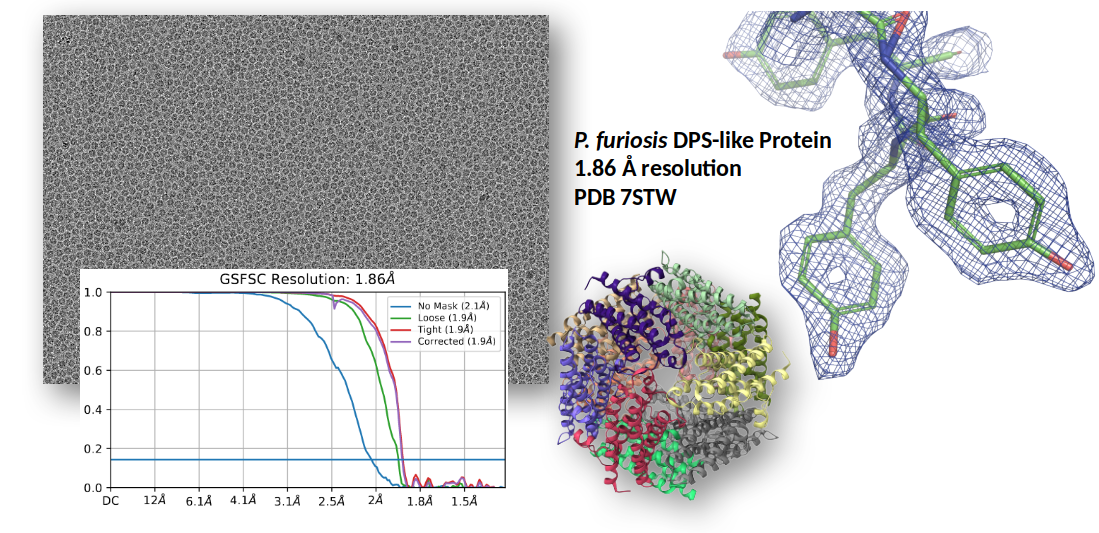What can Cryo-EM do for you?
The Cryo-EM facility (RRID:SCR_026324), an MSU core, is a regional facility that brings state-of-the-art cryo-EM capabilities, including single particle analysis and cryo-electron tomography, to the Northern Rocky Mountains. Instrumentation includes i) a 200kV Talos Arctica transmission electron microscope with a Gatan K3 camera, ii) 120kV Tecnai Spirit, and iii) a Vitrobot Mark IV. Collectively, these instruments allow imaging of biological structures at single nanometer to 2 Å resolution, and thus enables 3D modeling of cells, viruses, proteins, nucleic acid, and other soft matter at the atomic level.
Access to the Montana State Cryo-EM Core Facility is available to internal MSU users, external academic users, and external commercial users.
Services
Please view our instrumentation page for more details on available instrumentation.
Single Particle Analysis
The MSU Cryo-EM core routinely employs Single Particle Analysis (SPA) to determine high-resolution 3D structures of proteins and macromolecular complexes - in favorable cases approaching or surpassing 2Å resolution. Importantly, current data collection rates can surpass 8,000 images/day. The facility offers live, on-the-fly, data analysis and is equipped for full remote operation. It is also set up to allow data transfer between institutions via Globus.
Cryogenic Electron Tomography
Cryogenic Electron Tomography (CET) is a revolutionary technique that allows for high resolution 3D imaging of complex biological samples at single nanometer resolution, illuminating cellular and subcellular structures, organelles, liposomes, large macromolecular assemblies, virus-host interactions and viral assembly and trafficking. In favorable cases sub-tomographic averaging can push structural information to sub-nanometer resolution.
Acknowledgements
Acknowledgment of core facility services and instruments supported by Montana State University are required in publications as they are a key performance indicator of our research activity and we are required to report publication output to our funding agencies. Learn more about how to acknowledge Cryo-EM in your publication here.
Please report any recent publications to us by sending your DOI or a PDF using the link below:


